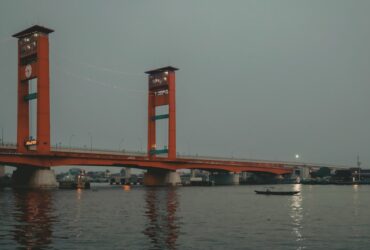A high density of structures, infrastructure, and people define the urban environment, which is a dynamic & complex place. It is essential to comprehend the urban environment in order to navigate it effectively and safely. Along with a range of transportation options like roads, sidewalks, bike lanes, and public transportation, urban areas are frequently defined by a mix of residential, commercial, and industrial zones. Also, a variety of cultural, social, & economic activities are frequently found in urban areas, which may have an effect on traffic patterns & pedestrian behavior.
Key Takeaways
- Understanding the urban environment is crucial for safe navigation
- Planning your route in advance can help avoid getting lost in the city
- Safety precautions and appropriate gear are essential for urban exploration
- Navigating traffic and pedestrian areas requires heightened awareness
- Being prepared for urban hazards and emergencies is key for a smooth experience
The layout & dynamics of the city are also impacted by events, road closures, and new construction projects, all of which contribute to the continuous change and evolution of the urban environment. Being aware of regional laws and ordinances, as well as cultural norms & customs, is essential to comprehending the urban environment and how they may affect your interactions and navigation of the city. Understanding the urban environment will help you plan your route more effectively, foresee possible hazards, and communicate with local authorities and residents in a courteous and knowledgeable manner. Routing your route in advance ensures a safe & effective travel when navigating an urban environment. Consider your options and determine the best route to reach your destination before you leave. Take into account variables like traffic patterns, road closures, accessible public transportation, & pedestrian-friendly routes.
To help you plan your route & stay on course, make use of maps, GPS navigation systems, or smartphone apps. In the event of unforeseen road closures or traffic jams, it’s also critical to plan alternate routes. Having a backup plan will help you stay safe when navigating the urban environment and keep you out of sticky situations. When planning your route, take into account the time of day as well, as pedestrian activity and traffic patterns can change dramatically during the day.
With careful route planning, you can reduce the likelihood of getting lost or running into unforeseen difficulties, giving you the confidence to confidently navigate urban areas. It is necessary to take the necessary safety precautions and carry the necessary equipment when navigating an urban area. It’s critical to always be aware of your surroundings when driving through cities.
Be cautious around construction sites, busy intersections, and uneven sidewalks as these could pose a risk. To further prevent collisions, pay attention to pedestrian right-of-way and traffic signals. Also, having the appropriate equipment can help you feel more secure when navigating an urban area.
If you often travel at night or in low light, think about donning reflective apparel or accessories to make yourself more visible to drivers. To protect yourself from potential accidents, wear a helmet when riding a bike or scooter, & obey all traffic laws. In an emergency, it can also be helpful to have a first aid kit and a fully charged cell phone with you. In an urban setting, navigating traffic and pedestrian areas calls for a combination of patience, awareness, and consideration for others.
When traveling on foot, always use designated crosswalks and obey traffic signals to safely navigate intersections. When crossing the street, pay attention to any cars that are turning or backing up, and make sure the drivers are looking at you. Make sure to abide by all traffic laws when riding a bike or scooter, and utilize the designated bike lanes when they are available. When navigating shared pathways or sidewalks, give pedestrians advance notice of your intentions and yield to them.
To ensure the safety of all road users, pay attention to speed limits, pedestrian crossings, and bike lanes when driving in urban areas. There are many risks in the urban environment that need to be carefully avoided & recognized. It’s crucial to be cautious and watch your step when passing through construction zones, potholes, and uneven sidewalks as these hazards can endanger pedestrians and cyclists.
Also, keep an eye out for any potential dangers that might be present on bike lanes or sidewalks, such as broken glass, debris, or slippery surfaces. Be mindful of potential security risks when traveling in urban areas, such as theft and pickpocketing. To prevent becoming a target for opportunistic criminals, keep your possessions safe and pay attention to your surroundings. You can navigate the urban environment with confidence and reduce the likelihood of mishaps or incidents by remaining watchful & cognizant of potential hazards. Respect, civility, & cultural sensitivity are necessary when interacting with locals and authorities in an urban setting.
Approach locals with grace and humility when you need help or directions, and keep in mind that there may be cultural differences that affect how you communicate. To ensure a good encounter when requesting assistance from local authorities, such as the police or transit officials, be cooperative and courteous. When interacting with people in an urban setting, keep in mind the social norms and customs of the area. Be mindful of noise levels and actions that might affect other members of the community, as well as respecting personal space and boundaries. You may easily navigate the urban environment & forge beneficial relationships within the community by treating contacts with locals and authorities with respect and cultural awareness.
Being ready and having efficient communication plans in place are essential for guaranteeing safety in the event of an emergency in an urban setting. Get familiar with the emergency phone numbers of your local law enforcement, fire department, and ambulance services. Always carry a fully charged cell phone so you can get help fast if you need it. Also, think about keeping a compact emergency kit on you at all times, filled with necessities like water, snacks, first aid supplies, and a flashlight for those unplanned events. Navigating the urban environment with peace of mind can also be enhanced by having a plan in place for informing friends or family members in an emergency.
To sum up, surviving in an urban setting necessitates cautious planning, being aware of potential risks, showing consideration for others, and employing strong communication techniques. You can confidently navigate city streets and guarantee a safe and enjoyable journey by being aware of the dynamics of the urban environment and taking the proper safety precautions.
If you’re looking for more adventurous challenges, Swift Riddle offers a wide range of puzzles to test your problem-solving skills. Their collection includes everything from brain teasers to intricate jigsaw puzzles, providing hours of entertainment for puzzle enthusiasts. Check out their website for more information on their products and contact them if you have any questions. For more tips on urban exploration, be sure to read the related article on Swift Riddle’s website.





















